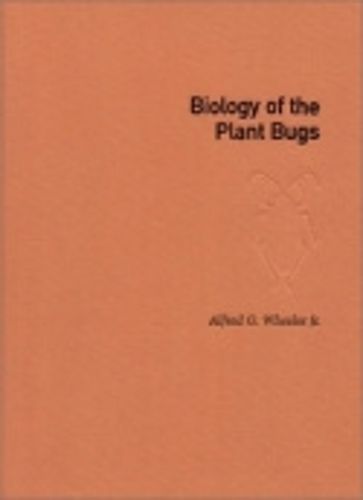Readings Newsletter
Become a Readings Member to make your shopping experience even easier.
Sign in or sign up for free!
You’re not far away from qualifying for FREE standard shipping within Australia
You’ve qualified for FREE standard shipping within Australia
The cart is loading…






Plant bugs – Miridae, the largest family of the Heteroptera, or true bugs – are globally important pests of crops such as alfalfa, apple, cocoa, cotton, sorghum, and tea. Some also are predators of crop pests and have been used successfully in biological control. Certain omnivorous plant bugs have been considered both harmful pests and beneficial natural enemies of pests on the same crop, depending on environmental conditions or the perspective of an observer.
As high-yielding varieties that lack pest resistance are planted, mirids are likely to become even more important crop pests. They also threaten crops as insecticide resistance in the family increases, and as the spread of transgenic crops alters their populations. Predatory mirids are increasingly used as biocontrol agents, especially of greenhouse pests such as thrips and whiteflies. Mirids provide abundant opportunities for research on food webs, intraguild predation, and competition.
Recent worldwide activity in mirid systematics and biology testifies to increasing interest in plant bugs. The first thorough review and synthesis of biological studies of mirids in more than 60 years, Biology of the Plant Bugs will serve as the basic reference for anyone studying these insects as pests, beneficial IPM predators, or as models for ecological research.
$9.00 standard shipping within Australia
FREE standard shipping within Australia for orders over $100.00
Express & International shipping calculated at checkout
Plant bugs – Miridae, the largest family of the Heteroptera, or true bugs – are globally important pests of crops such as alfalfa, apple, cocoa, cotton, sorghum, and tea. Some also are predators of crop pests and have been used successfully in biological control. Certain omnivorous plant bugs have been considered both harmful pests and beneficial natural enemies of pests on the same crop, depending on environmental conditions or the perspective of an observer.
As high-yielding varieties that lack pest resistance are planted, mirids are likely to become even more important crop pests. They also threaten crops as insecticide resistance in the family increases, and as the spread of transgenic crops alters their populations. Predatory mirids are increasingly used as biocontrol agents, especially of greenhouse pests such as thrips and whiteflies. Mirids provide abundant opportunities for research on food webs, intraguild predation, and competition.
Recent worldwide activity in mirid systematics and biology testifies to increasing interest in plant bugs. The first thorough review and synthesis of biological studies of mirids in more than 60 years, Biology of the Plant Bugs will serve as the basic reference for anyone studying these insects as pests, beneficial IPM predators, or as models for ecological research.